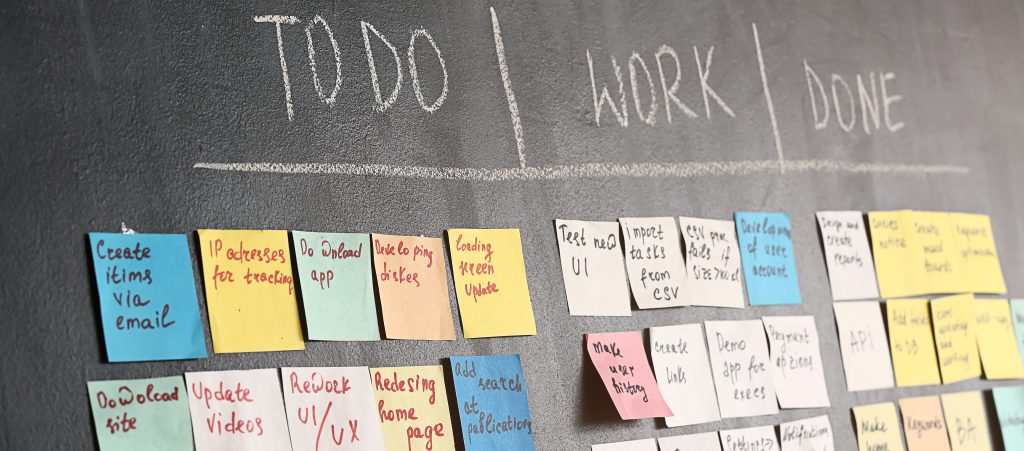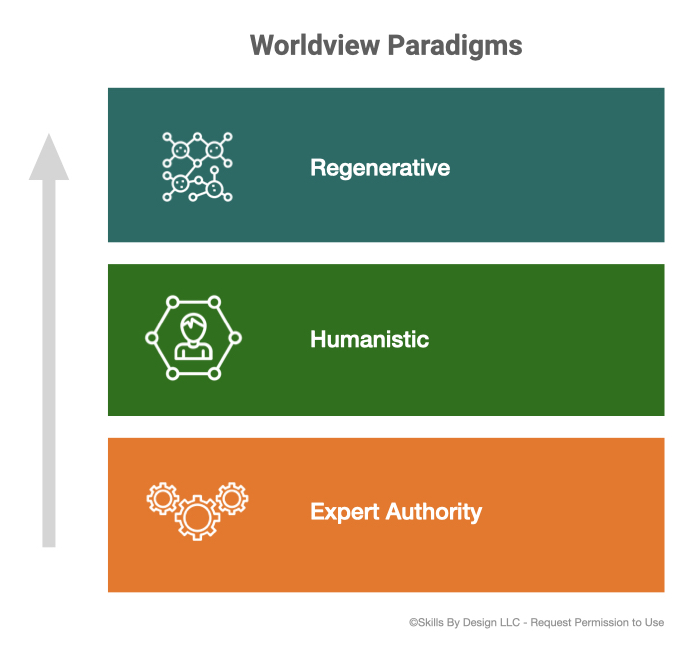What’s Missing In the Transition to ‘Agile’ Ways of Working (and How L&D Can Help)

It is less of a secret than ever that new ways of working are needed in today’s changing workplace. The old ways can’t keep up–they lead to wasted time and resources. The majority of organizations today are somewhere on the path to transitioning to these new ways of working. Some are seeing the need and thinking about it, many are implementing new structures.
Most, however, are struggling as they hit unforeseen roadblocks. It turns out it’s not as simple as rolling out a new set of procedures. These new approaches require a deeper shift in how we see, think about, interact with, and relate to our teammates, customers, and other stakeholders.
We’ll argue here that one important thing that’s missing is a fundamental shift in our worldview paradigm. As long as we’re operating from the old paradigm, we’ll struggle to adopt these new ways of working. This of course is no simple task. There are no quick and easy solutions–it’s not going to happen by assigning people an elearning module on Agile Mindset. It will take some longer-term strategic thinking and persistence. It will also require that we can communicate the need and value to our stakeholders in a way that influences them to invest in the critical developmental work. They have to understand there are no shortcuts.
An effective approach to facilitating this shift is through the use of frameworks to support new levels of reflective practice. For example, we often use the simple paradigm framework below to help individuals and teams reflect on where their thinking is coming from.

This approach, as well as this specific framework (among many others we use), is inspired by the work of our mentor and teacher Carol Sanford, who has been doing this work with leading organizations around the globe for over 40 years. You can read more about her work here.
One key function of a useful framework is that it generates new questions that lead to co-creative conversations. It also helps us to make new connections and discover new insights. In this case, many of us are unaccustomed to reflecting on our own thinking through the lens of paradigms. We are not very conscious of where our thinking comes from. Until we become more conscious in this way, we remain stuck in old paradigms, stuck behind the barriers they produce for us which we don’t see or understand clearly.
Let’s take a moment to unpack each of the paradigms presented here and how they relate to our ways of working.
From the Expert Authority paradigm, we expect and rely on clear direction from those above us in the hierarchy. This paradigm emerged along with the industrial revolution and mass-manufacturing. It was relatively well-suited in an environment that was predictable and controllable, with clear best practices and procedures to follow. This paradigm is still very influential in today’s workplace, but it is producing a good deal of tension and waste as things are changing faster and faster. Waiting around for clear direction from above is simply too slow and inefficient in many cases. There is also often a culture of fear and perfectionism associated with this paradigm that presents a fundamental barrier to more agile ways of working, where a willingness to experiment and fail is critical.
From the Humanistic paradigm, we are focused on empowering individuals to self-actualize their potential. We create safe spaces for people to express themselves and we recognize the relative nature of knowledge. The problem that tends to emerge from this paradigm is a form of fragmented idealism and relativism, as well as a state of being overly inward-focused. Echo chambers emerge along with false senses of certainty, over-sensitivity, and an unwillingness to engage with groups or individuals that hold opposing views. Such a phenomenon presents a significant barrier to needed ways of working where interacting with diverse stakeholder groups and considering multiple perspectives is fundamental.
From the Regenerative paradigm, the focus expands from actualizing individual potential to actualizing the potential of whole living systems, which include individuals. Such expansion helps us to avoid the idealism/relativism-fueled fragmentation and inwardly-focused over-sensitivity we see within the Humanistic paradigm.
The aim of a regenerative way of working is to evolve the capacity of stakeholder systems to co-evolve: including individuals, teams, families, organizations, customers, communities, markets, industries, and ecosystems. We come to see these systems as unique wholes, nested within other unique wholes, developing their ability to express their unique essence in a value-adding process.
L&D has a ton of unrealized potential to support the transition to new and urgently needed ways of working. However, as long as we are stuck in old ways of thinking, we’ll never overcome the critical barriers discussed here. We can’t support others to make this transition until we make it ourselves.
This begins by shaking ourselves loose from the old thinking patterns that we are attached to. Frameworks are powerful tools for facilitating this type of critical disruption and supporting a deeper reflective practice that integrates with whatever the team is working on now.
Founder and CEO at The Continuous Learning Company
Tom helps L&D teams create more strategic value by developing capabilities and cultures of continuous learning.
Latest posts by Tom Palmer (see all)
- Beyond Growth Mindset: Building Coevolutionary Capacity - April 20, 2023
- 7 Principles of Regenerative Learning & Development - March 15, 2023
- L&D Must Go Deeper: Shifting Epistemology - January 16, 2023
